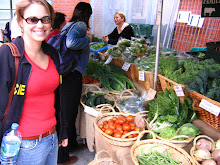 There is a narrative of poverty about the Dominican Republic, perpetuated by people like Angelina Jolie that most people accept as par for the course in “developing countries”. I do not dispute that people here are poor, and to be sure, there are people here, like everywhere, who live in conditions of grinding poverty and desperation. I would also add that a lot of those living in poverty here are Haitians, whose struggle for existence is exacerbated by lack of documentation and unreliable work visas. But, poverty has many faces. One of them is dignity. Another is perseverance. Another is the strength of women and families.
There is a narrative of poverty about the Dominican Republic, perpetuated by people like Angelina Jolie that most people accept as par for the course in “developing countries”. I do not dispute that people here are poor, and to be sure, there are people here, like everywhere, who live in conditions of grinding poverty and desperation. I would also add that a lot of those living in poverty here are Haitians, whose struggle for existence is exacerbated by lack of documentation and unreliable work visas. But, poverty has many faces. One of them is dignity. Another is perseverance. Another is the strength of women and families.I questioned my own assumptions about poverty and this place when I first came in 2007. I saw things in the rural areas that surprised me—well-fed animals, neatly swept yards, freshly painted houses and lacy curtains waving in the windows. But it was the fat babies that really turned my head—then and now. Everywhere we go, we see fat babies waddling around, and it makes me really happy for lots of reasons. One reason is that infant mortality is usually a result of malnutrition, and this is also related to maternal malnutrition. The fact that we see a lot of fat babies suggests that both mothers and babies are getting enough food—which is usually not the case in poor populations.

I puzzled about this for a bit, and wondered if maybe I was just seeing what I wanted to see, or rather, just had my head turned by cute babies, until I ran across a very interesting statistic. Almost a quarter of the world’s children under five years old are underweight. The average percentage for the Caribbean and Latin American region is 8%. The percentage for the DR is 5%. So I was right, babies here—are at least statistically fatter than they are elsewhere. But why? The DR is slightly below the world average in terms of income (using purchasing power parity as a measure), as has an average annual income per person of around $8000, vs $10,000 for the world average. This on par with the rest of the region, which have (in some cases astonishingly) higher numbers of underweight children (15% for Ecuador). The DR also has the same income per capita as Thailand, but they have rates of underweight children closer to the world average (20%). If it’s not income, then what is it?
I would like to suggest that it is because women are the main breadwinners and heads of household here. I know this is paradoxical, and flies in the face of conventional wisdom. It is well documented that female headed households are generally poorer than male-headed households. But what I see here is that female-headed households have complex relations with other women in female-headed households, and that a reciprocal social economy revolves around children that prioritizes sharing resources, including food. For example, in our guesthouse, our housemother, AnaJulia is a single mother and she regularly babysits (for no money) for her sisters, sisters-in-law and other female neighbors while they work or go to school. She also regularly feeds a large extended family every time they visit. Roosters and rum (the provenance of masculinity) do not compete for resources in these households, and women in the DR regularly forsake relationships with men because they have failed to support their children. Tellingly, the countries with the highest levels of underweight children (Bangladesh, Yemen, Ethiopia) are also those countries where women have the least amount of autonomy, mobility and control over their bodies.
I don’t know if I’m right or wrong, and I probably won’t pursue the question any further than this. I’m just happy to see fat babies, and I hope to keep seeing them for a long time to come. I’m also happy to see the ways in which people cope and prioritize in the face of scarce resources, and turn the narratives of poverty and hopelessness into narratives of dignity, resourcefulness and strength.








